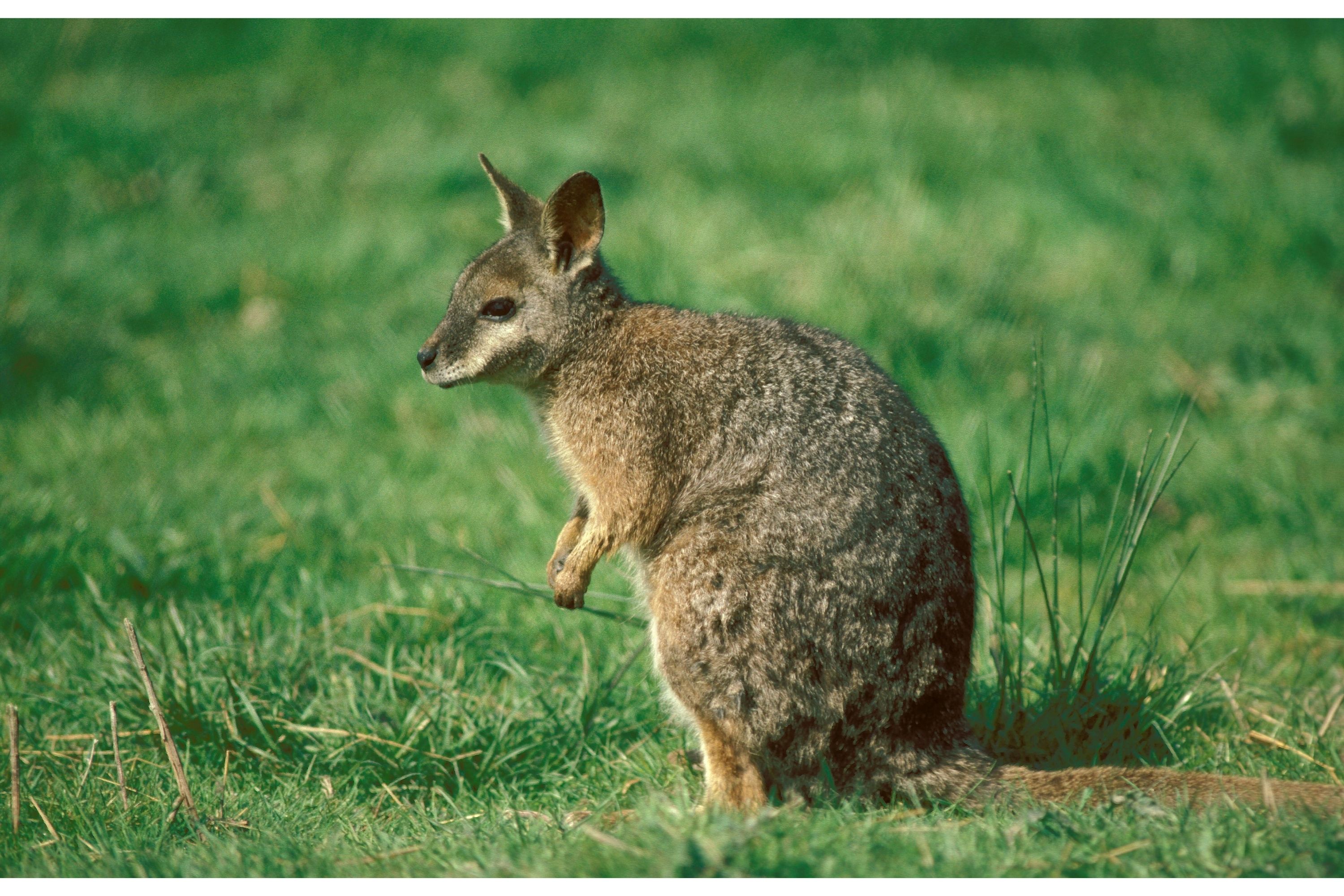Parma wallaby
(Macropus parma)

Description
The parma wallaby (Notamacropus parma) is the smallest member of the marsupial genus Notamacropus. It inhabits wet sclerophyll (hard-leaved) forests of northern New South Wales, Australia. Adult parma wallabies typically weigh 4–5 kg, with the body length of about 0.5 m (1.6 ft). The parma wallaby was first described by British naturalist John Gould in the 1840s. Shy, nocturnal, and rarely encountered by people, it was believed to be extinct, but was rediscovered in the 1960s on several locations. The species remains rarely seen, with some evidence for a recent population decline. The parma wallaby is the smallest member of the genus Notamacropus, at between 3.2 and 5.8 kg (7.1 and 12.8 lb), less than one-tenth the size of the red kangaroo. It is about 0.5 m (1.6 ft) in length, with a sparsely furred, blackish tail about the same length again. The fur is a reddish or greyish brown above, greyer about the head, and fading to pale grey underneath. Presumably, individuals had been sighted many times during the years when it was "extinct", but mistaken for an especially slender and long-tailed example of the otherwise similar red-legged and red-necked pademelons. Like the pademelons, it prefers to occupy wet sclerophyll forest with thick undergrowth, and grassy patches, although parma wallabies are also found occasionally in dry eucalypt forest and even rainforest. It is mainly nocturnal and usually shelters in thick scrub during the day, through which it can travel at speed along the runways it makes. It emerges from cover shortly before dusk to feed on grasses and herbs in forest clearings. The parma wallaby is largely solitary, with two or at most three animals sometimes coming together to feed in favourable circumstances. Although the parma wallaby remains rare, with some evidence that numbers have recently declined. It is classified as Near Threatened according to the 2015 IUCN assessment. The parma wallaby was first described by British naturalist John Gould in about 1840. Its epithet parma (Waterhouse 1846) comes after a word from a New South Wales Aboriginal language, but the exact source word and language have not been identified. In 2019, a reassessment of macropod taxonomy determined that Osphranter and Notamacropus, formerly considered subgenera of Macropus, should be moved to the genus level. This change was accepted by the Australian Faunal Directory in 2020.
Taxonomic tree:







